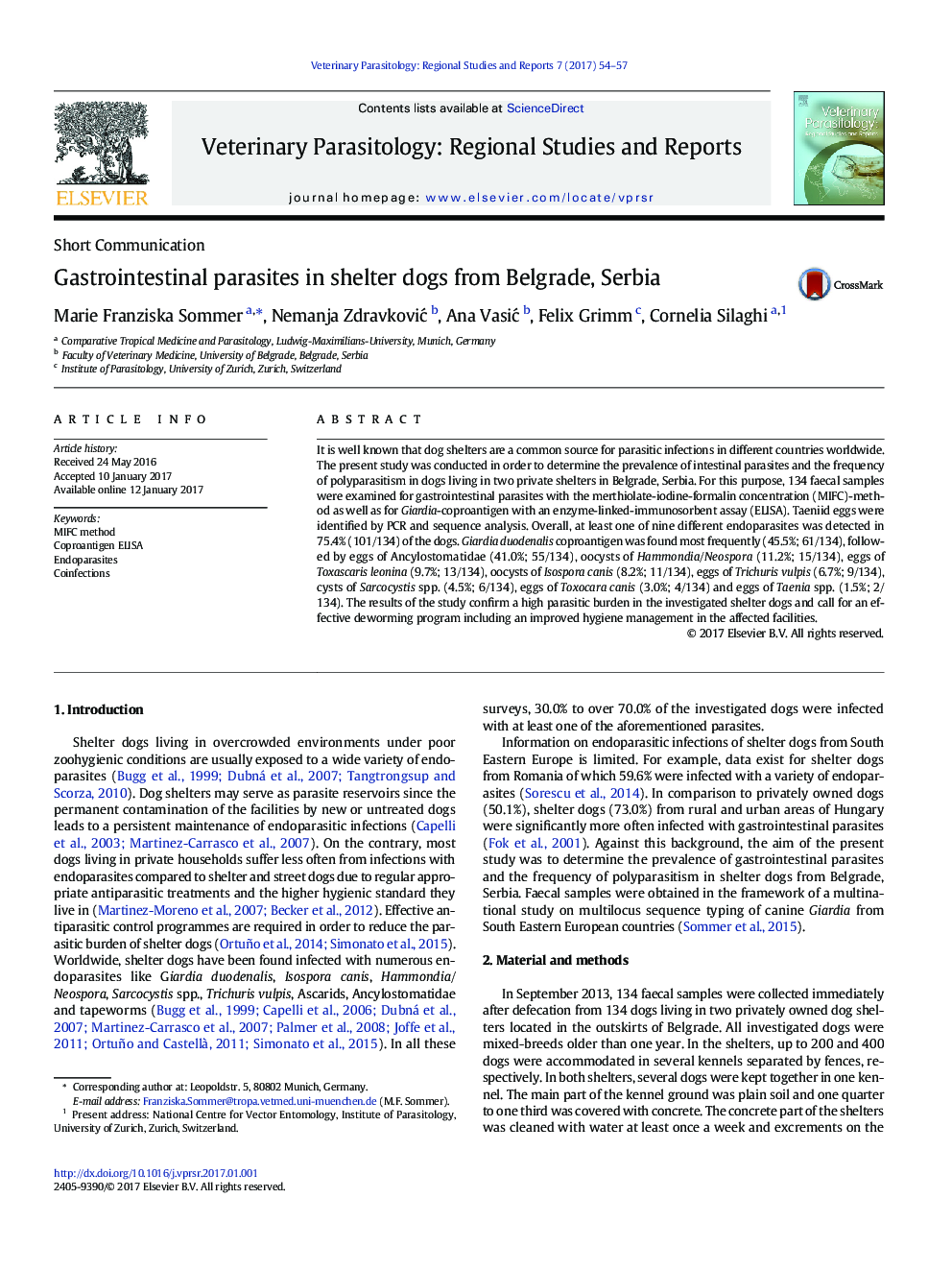| Article ID | Journal | Published Year | Pages | File Type |
|---|---|---|---|---|
| 5546069 | Veterinary Parasitology: Regional Studies and Reports | 2017 | 4 Pages |
â¢Parasitism is common in dogs living in shelters worldwide.â¢Faecal samples of shelter dogs from Serbia were investigated for endoparasites.â¢The majority of the dogs was infected with at least one of nine different parasites.
It is well known that dog shelters are a common source for parasitic infections in different countries worldwide. The present study was conducted in order to determine the prevalence of intestinal parasites and the frequency of polyparasitism in dogs living in two private shelters in Belgrade, Serbia. For this purpose, 134 faecal samples were examined for gastrointestinal parasites with the merthiolate-iodine-formalin concentration (MIFC)-method as well as for Giardia-coproantigen with an enzyme-linked-immunosorbent assay (ELISA). Taeniid eggs were identified by PCR and sequence analysis. Overall, at least one of nine different endoparasites was detected in 75.4% (101/134) of the dogs. Giardia duodenalis coproantigen was found most frequently (45.5%; 61/134), followed by eggs of Ancylostomatidae (41.0%; 55/134), oocysts of Hammondia/Neospora (11.2%; 15/134), eggs of Toxascaris leonina (9.7%; 13/134), oocysts of Isospora canis (8.2%; 11/134), eggs of Trichuris vulpis (6.7%; 9/134), cysts of Sarcocystis spp. (4.5%; 6/134), eggs of Toxocara canis (3.0%; 4/134) and eggs of Taenia spp. (1.5%; 2/134). The results of the study confirm a high parasitic burden in the investigated shelter dogs and call for an effective deworming program including an improved hygiene management in the affected facilities.
